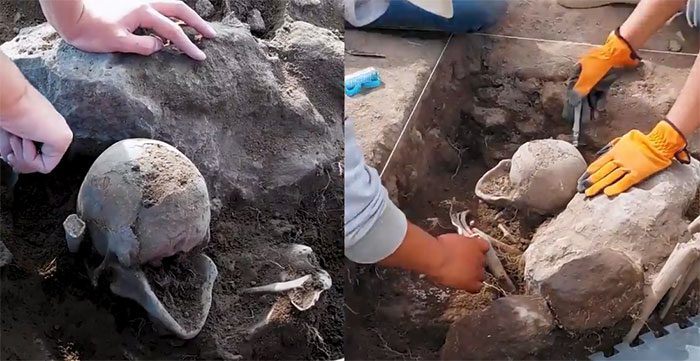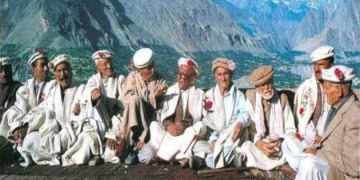Scientists Uncover Two Skulls from 600 – 1350 AD with Intentionally Deformed Shapes to Create a Unique Heart-Like Form.
Archaeologists excavating the remains at the La Ferrería Archaeological Zone. (Video: INAH)
A research team from the National Institute of Anthropology and History of Mexico (INAH) has discovered two skulls that may have been intentionally shaped into a heart-like form at the Casa Colorada architectural complex located within the La Ferrería Archaeological Zone in Durango state, northwestern Mexico, Newsweek reported on July 26. These two skulls belong to two of the 16 skeletons buried at the site, which include the remains of eight adults aged 30 to 40, and the rest are children aged 1 to 7 years. Most of the skeletons are fragmented, with only three adult skeletons being well-preserved.
Experts have noted that two of the skulls were intentionally distorted to resemble a heart shape when viewed from certain angles. This phenomenon has not been previously documented at the La Ferrería Archaeological Zone.

The development of the skull is altered under applied force.
Intentional skull deformation is a practice recorded in several ancient cultures, including those of Mesoamerica (which encompasses much of Mexico and Central America). Today, this practice is even still observed in a few locations around the world.
This practice prevents normal skull development, resulting in unique shapes. The skull’s growth can be altered through the application of force, which can be executed using various techniques, such as binding with wooden planks. Typically, such techniques are applied during infancy when the skull is soft and pliable.
La Ferrería was inhabited by pre-Hispanic peoples (the period before Spanish explorers arrived in Central and South America) around 600 – 1350 AD, according to INAH. The site features several notable archaeological remains, including circular ritual spaces, pyramid-shaped structures, and ballgame courts.
The Casa Colorada architectural complex, which existed between 600 – 950 AD, is situated in the upper part of La Ferrería and covers an area of 600m2. The complex comprises nine rectangular structures arranged around a square. Previous excavations have also uncovered numerous graves, leading researchers to conclude that this area was designated for the deceased.


















































